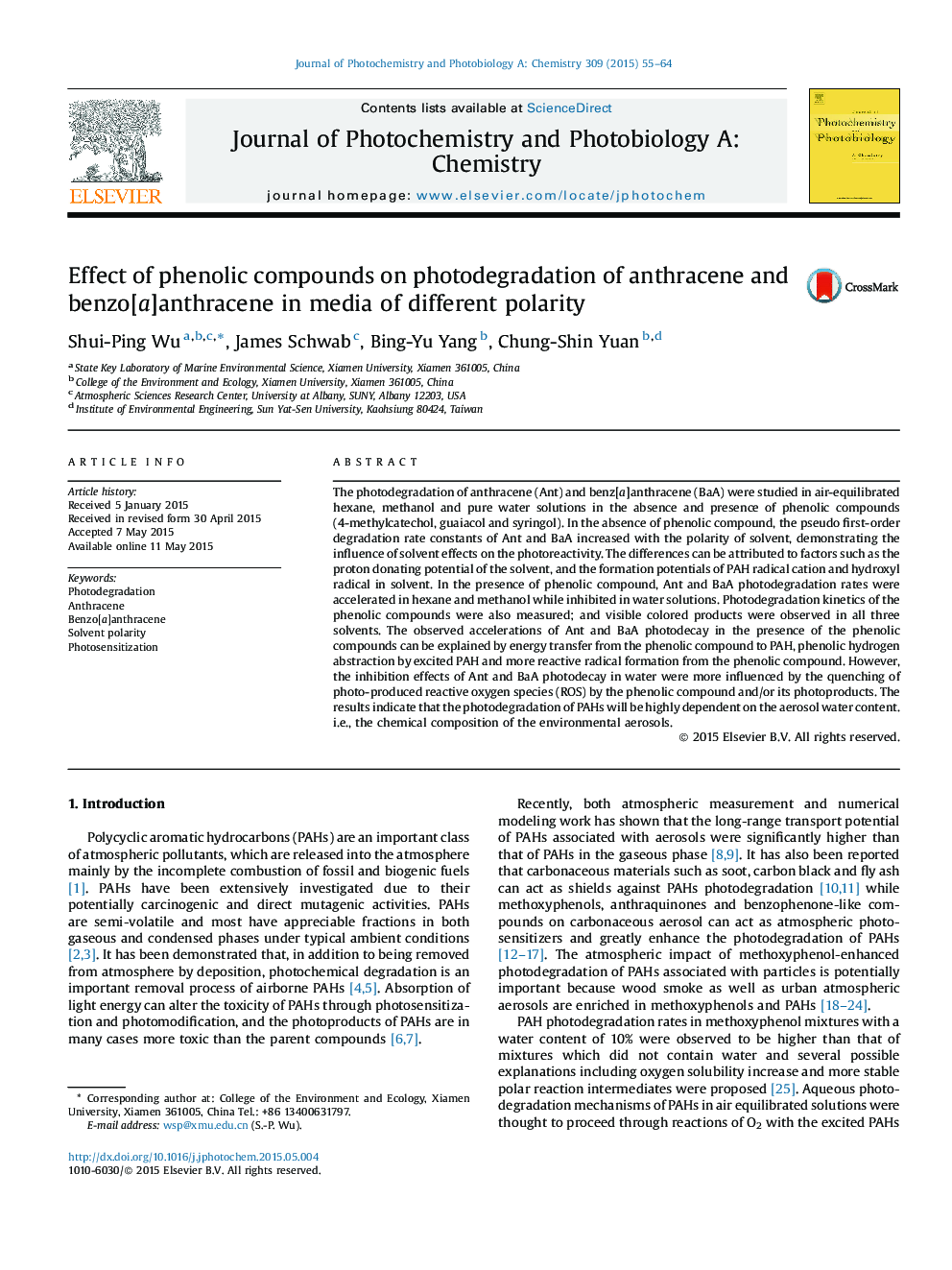| کد مقاله | کد نشریه | سال انتشار | مقاله انگلیسی | نسخه تمام متن |
|---|---|---|---|---|
| 26631 | 43968 | 2015 | 10 صفحه PDF | دانلود رایگان |
• Polar solvents can accelerate PAH direct photodecay.
• Direct photodecay of phenolic compounds is inhibited in water.
• Phenolic compounds act as photosensitizers for PAH in hexane and methanol.
• Phenolic compounds act as antioxidants to inhibit PAH photodecay in water.
The photodegradation of anthracene (Ant) and benz[a]anthracene (BaA) were studied in air-equilibrated hexane, methanol and pure water solutions in the absence and presence of phenolic compounds (4-methylcatechol, guaiacol and syringol). In the absence of phenolic compound, the pseudo first-order degradation rate constants of Ant and BaA increased with the polarity of solvent, demonstrating the influence of solvent effects on the photoreactivity. The differences can be attributed to factors such as the proton donating potential of the solvent, and the formation potentials of PAH radical cation and hydroxyl radical in solvent. In the presence of phenolic compound, Ant and BaA photodegradation rates were accelerated in hexane and methanol while inhibited in water solutions. Photodegradation kinetics of the phenolic compounds were also measured; and visible colored products were observed in all three solvents. The observed accelerations of Ant and BaA photodecay in the presence of the phenolic compounds can be explained by energy transfer from the phenolic compound to PAH, phenolic hydrogen abstraction by excited PAH and more reactive radical formation from the phenolic compound. However, the inhibition effects of Ant and BaA photodecay in water were more influenced by the quenching of photo-produced reactive oxygen species (ROS) by the phenolic compound and/or its photoproducts. The results indicate that the photodegradation of PAHs will be highly dependent on the aerosol water content. i.e., the chemical composition of the environmental aerosols.
Photodecay rate constants of anthracene (Ant) and benz[a]anthracene (BaA) in the presence of increasing phenolic compound concentrations followed an exponential decay in water (cross); however, the rate constants of the two PAHs in the presence of increasing phenolic compound concentrations resulted as a logarithm grow in hexane (square) and methanol (circle). The results indicate that the phenolic compounds from biomass burning can act as potential antioxidants to inhibit the photodecay of PAHs. The phenolic compounds can be associated with the aged and hydrophilic biomass burning smoke aerosols and can enhance PAHs long-range transport potential.Figure optionsDownload as PowerPoint slide
Journal: Journal of Photochemistry and Photobiology A: Chemistry - Volume 309, 15 August 2015, Pages 55–64
